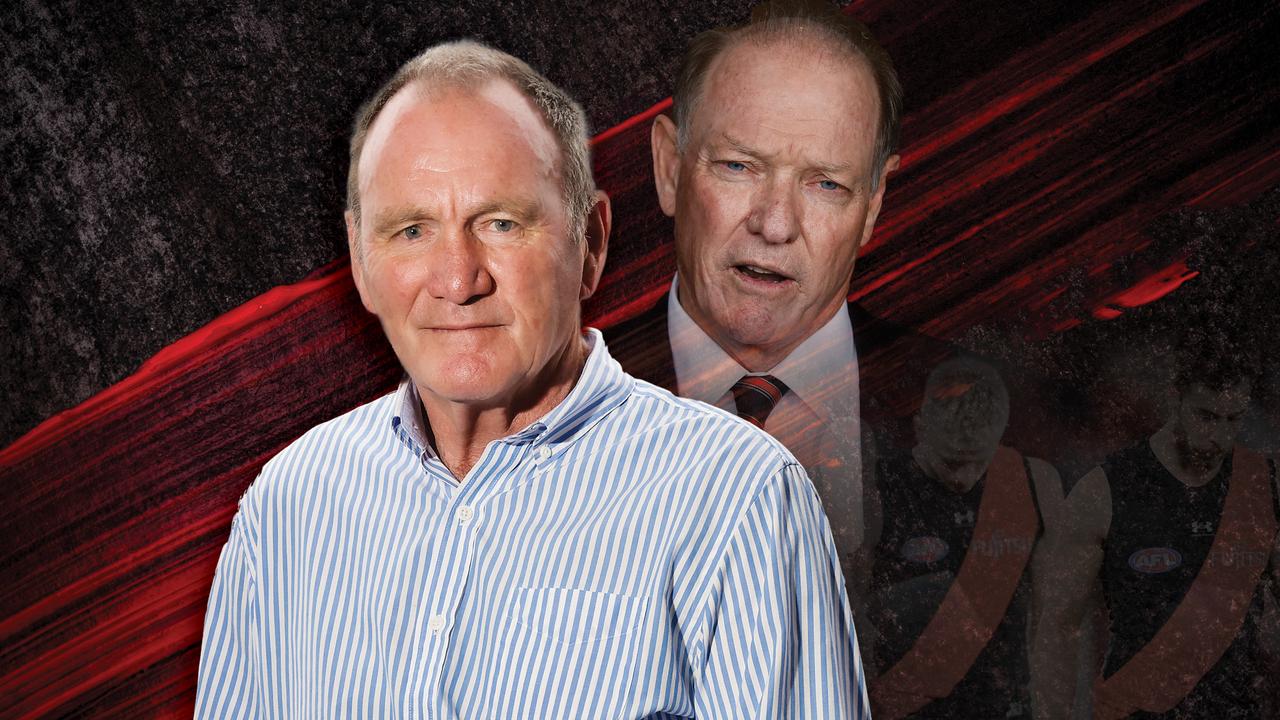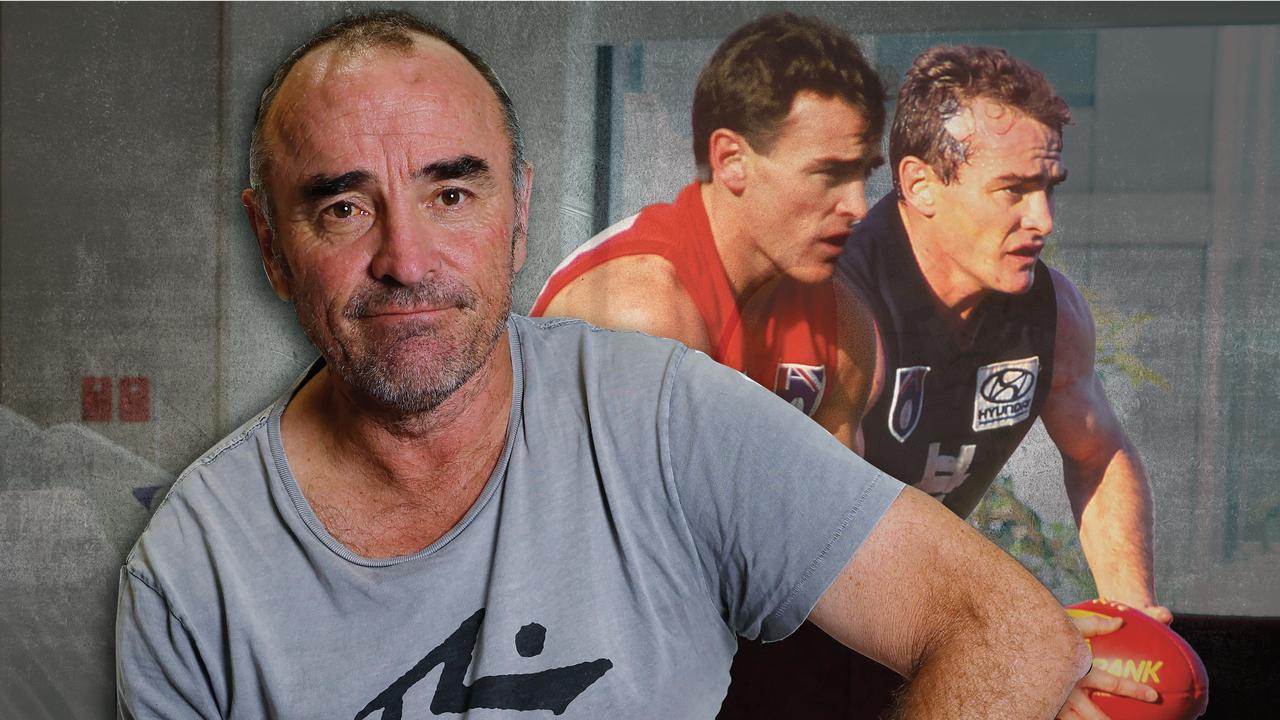AFL must introduce on-field starting positions to save the full-forward
JUST as Africa is working to save the white rhino, the AFL has to save the full-forward. And the answer will drive the ‘leave the game alone’ crowd nuts.
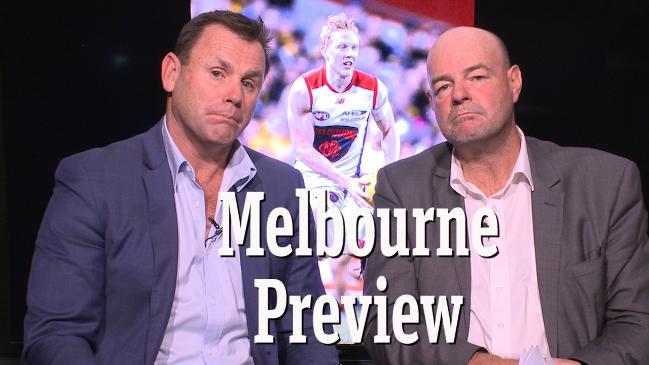
Mark Robinson
Don't miss out on the headlines from Mark Robinson. Followed categories will be added to My News.
IF LEIGH Matthews says it once, he says it 50 times a season: AFL is great, but it could be better.
AFL headquarters this year had the opportunity to make the game better, or at least try to, but passed.
In late January, new footy boss Steve Hocking announced there would be no rules changed for the coming year.
CRYSTAL BALL: EXPERT PREDICTIONS FOR NEW SEASON
MATTHEW LLOYD: WILL SLEEPING GIANTS WAKE IN 2018?
INSIDE WORD: SEE ALL THE AFL PLAYERS’ PICKS
By season’s end, let’s hope he will change his tune and introduce the radical move of starting positions at stoppages for 2019.
Not only would it ease congestion, it may also rescue one of the blue-chip positions on the ground.
FOODIE HEAVEN: BUMPER GUIDE TO THE MELBOURNE FOOD AND WINE FESTIVAL
Just as Africa is working to save the white rhino, the AFL has to save the full-forward.
Not the position, mind you, but the type of player who occupies it. And how he occupies it.
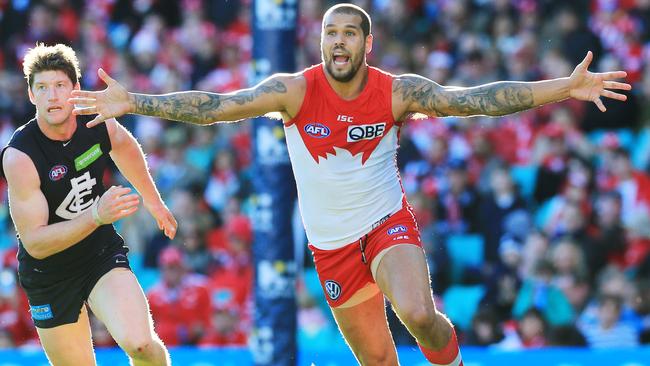
You open up yourself to criticism — for being a historical fan and not a progressive type — when you hanker for facets of the past, but I miss the high-marking, pack-marking, lead-up marking forward who kicked bags of goals.
It is the kid in me. Speccies and goals. Goalsquare marks and, as Lou Richards would say, put down your glasses.
Think of what we had instead of what we have.
We’ll start from the 1980s and meander: Bernie Quinlan, Michael Roach, Paul Salmon, Tony Lockett, Jason Dunstall, Gary Ablett Sr, Stephen Kernahan, Tony Modra, Wayne Carey, Dermott Brereton, John Longmire, Chris Grant, Peter Sumich, Stewart Loewe, Alastair Lynch, Billy Brownless, Sav Rocca, Matthew Richardson, Matthew Lloyd, Warren Tredrea, Brendan Fevola, Barry Hall, Jack Riewoldt, Matthew Pavlich, Lance Franklin and Josh Kennedy. Superstars all of them.
But the fear is we won’t see another Plugger, Fev or Modra again.
While it has been changing for some time, the 2016 Western Bulldogs and last year’s Tigers, whose styles were based on a forward-half territory game, may have changed conventional forward setups forever.
The last century goalkicker was Franklin in 2008 (102 goals). Before that it was Fraser Gehrig in ’04 (103, including finals), and before that Lockett in ’98 (107).
A century was kicked every season from ’86 to ’96 — other than in 1990, when North Melbourne’s John Longmire kicked 98 goals.
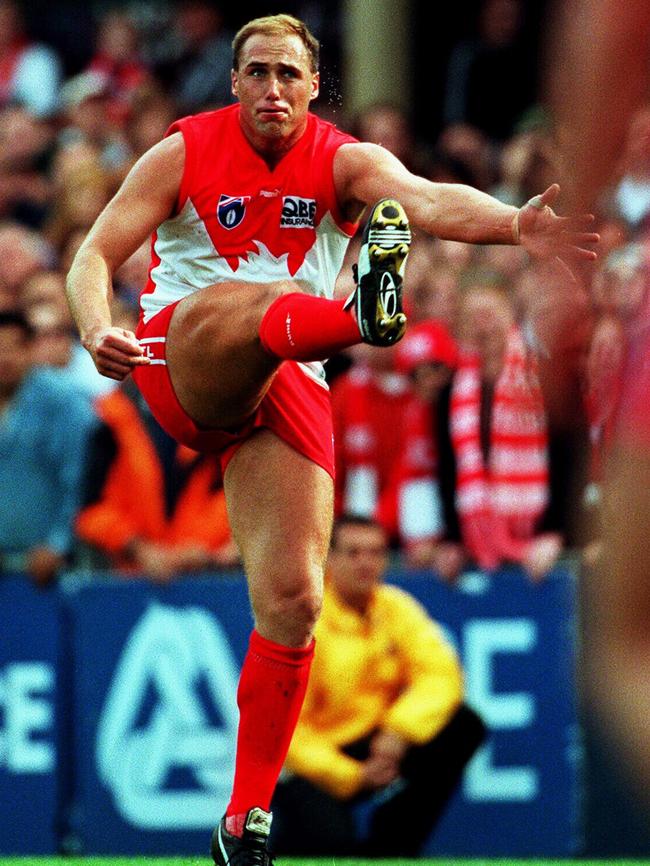
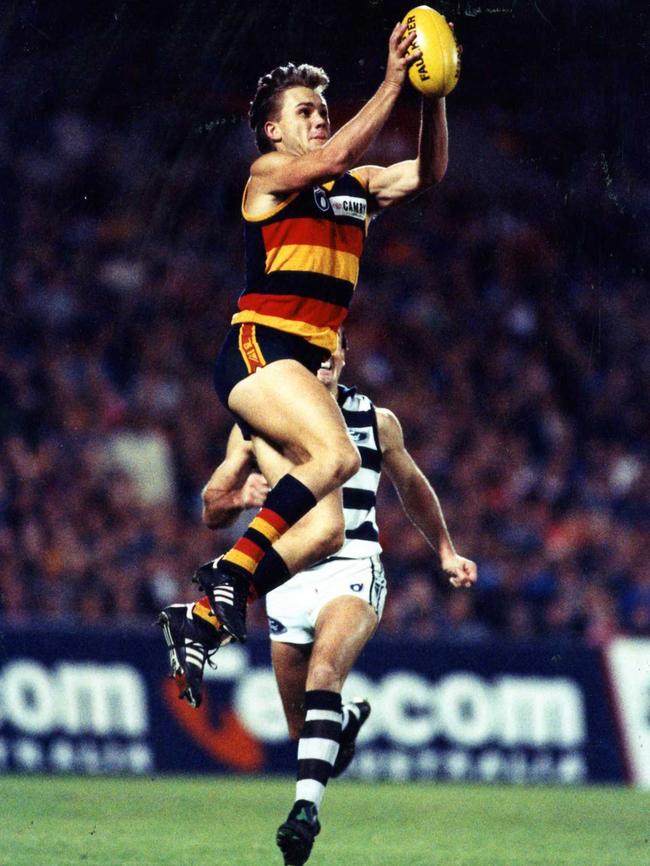
The game has never been more of a forward-half game than it is now, according to Champion Data’s Glenn Luff in the 2018 AFL Prospectus.
“The change happened in 2009. Ross Lyon’s forward press was the most aggressive press we had seen,” Luff wrote.
“Then Collingwood followed it up the next season, taking it to a whole new level. The gap between defensive and forward-half scoring has been reasonably steady since.
“But the gap widened in 2017 and has never been so great. Will this trend continue? Absolutely, it’s going nowhere unless there are rule changes to bring in starting positions to reduce congestion and promote more positional play.”
The haters will say the starting positions resemble netball, but you would take that every day over rugby union scrums.
Midfield congestion has been a talking point for several years, but congestion in the forward-50m arc is equally an issue.
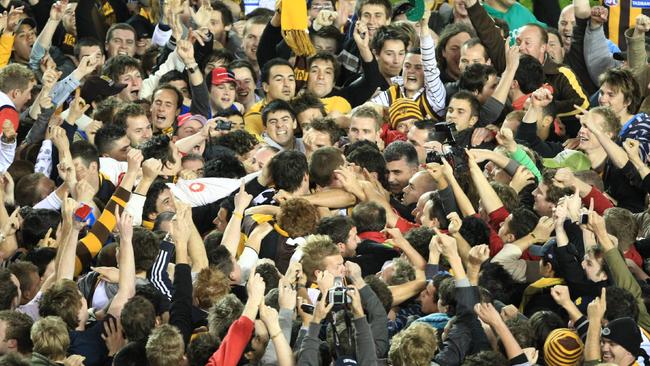
What hope is there for key-position players to take marks when their leads are cut off by players behind the ball and when their marking contests are often two against one?
The interceptor, the player who leaves his man and jumps third-up to mark, has become a massive presence in the game.
They are called brilliant defenders. But they’re not really. Yes, they are courageous and crafty, but they often have a free and easy fly at the ball.
What does the AFL want in the game? Loose-man interceptors or more opportunities for key forwards to take marks and kick goals?
As matches are often played in a 70m bubble, the interceptor has become king, when arguably he should be one of the pawns.
It’s why starting positions are a necessity.
Hocking and his boss, Gillon McLachlan, have a responsibility to save the full-forward.
In a nutshell, it would mean at least two forwards, maybe three, with their defenders, would be required to be inside 50m at every stoppage.
The positives are plentiful. The game would not be played in the bubble, there would less congestion at the ball and there would be a return to one-on-one competition in the air between the best key forward and best key defender.
For example, if the ball was moved quickly it could be Jarryd Roughead and Cyril Rioli versus Heath Grundy and Nick Smith. Until the cavalry from both sides arrive, of course.
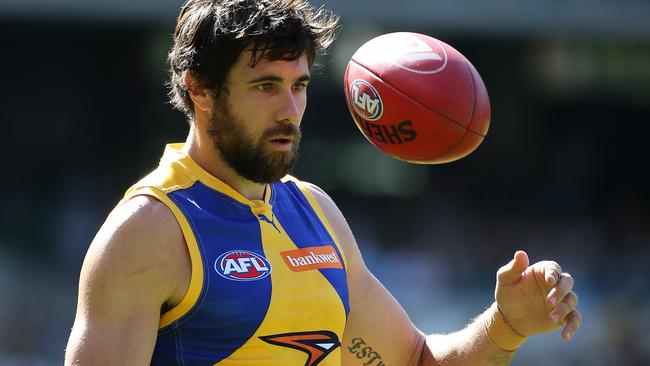
The battle to kick goals has never been so difficult.
The battle for forwards to kick goals and then pressure like hell has never been more demanding.
It’s why the success of the Bulldogs and the Tigers, with virtually one tall and a bevy of mid-sized and small forwards, must be admired, but also tempered.
As Luff asks: “Is that the system going forward?”
Clearly, full-forward is becoming a second home for the midfielders and, to be honest, it has been a terrific deployment.
Richmond used Dustin Martin at full-forward to great reward. Geelong used Patrick Dangerfield, while Fremantle’s Nathan Fyfe, Port Adelaide’s Robbie Gray and Sydney’s Josh Kennedy have also played that role.
It is exciting and bold and successful.
And what’s the bet the likes of Patrick Cripps, Jack Ziebell, Scott Pendlebury, Marcus Bontempelli and Christian Petracca are given increased full-forward time this year?
The genie is out of the bottle.
As a result, “talls” have become a dying breed. The second ruckman is not in the best 22. This became obvious when Richmond’s Shaun Grigg and the Bulldogs’ Lin Jong were rucking for their respective teams last season.
More significantly, the second tall forward has been virtually scrapped by the past two premiership teams.
Key forwards used to be the pin-up boys of AFL, but like so much else, they are being overrun by midfielders.
It’s time, if not urgent, for the AFL to try to drag as much of the genie back into the bottle as it can.
It’s time for starting positions.

